Gearing Up for Color
Is this the year you’re going to perk up your plantings? Add some pizzazz to your place? Let’s talk about annual color, and let’s do it up right.
• Start with a plan. Draw your beds out on a grid. It doesn’t have to be sophisticated, but make every square foot count. Know what types of plants you’re going to grow and when you’re going to grow them. That’s the way the pros get those great looks from their gardens.
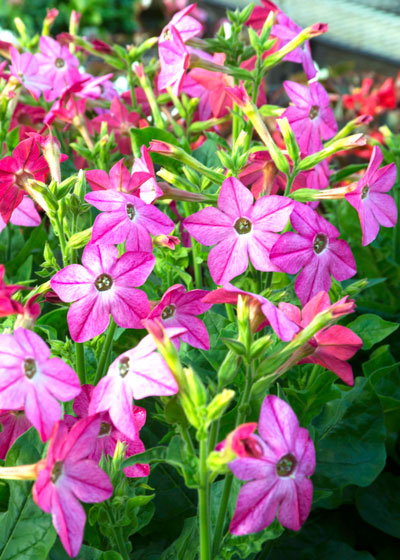
• Raised beds are always better. You can always add water. It’s much more difficult to remove water when you have too much. It’s amazing what a difference raising a planting bed by just a few inches can make in periods of prolonged rains. (Remember those?)
• To improve any soil you should add organic matter. It comes in many forms: sphagnum peat moss, compost, well-rotted manure, finely-ground bark mulch, leaf humus, and so on. For best results, use a combination of some of all of them. Add 4 to 5 inches of the organic matter and rototill it to a depth of 12 inches. Organic matter helps loosen a tight clay soil and it helps sandy soils hold moisture and nutrients. It needs to be replenished in half those amounts every time you replant.
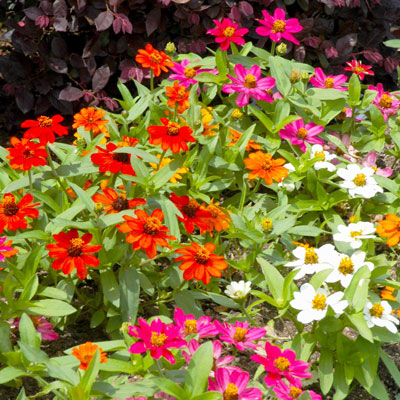
• To loosen clay soils include expanded shale along with the organic matter. Research by Texas A&M shows it to be much more effective than sand in long-term improvement of soil structure.
• Use a rear-tine tiller for large beds or a mini-tiller for smaller spaces. Spading forks and shovels are theoretically fine, but practically speaking they don’t cut the mustard with heavy clays. You can’t beat a good tiller.
• Plant in masses of one color or mix complementary colors for a harmonious blend. Monochromatic plantings, where one color was massed into a bed, were once the trend, but more recently plant breeders have given us harmonious combinations of families of color that can look very good growing together.
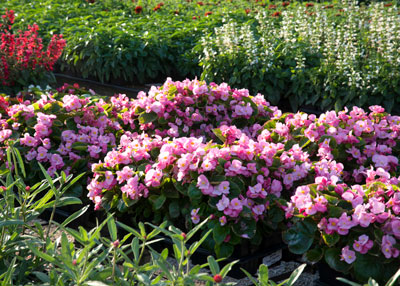
• Buy fresh, vigorous transplants. Plants should be healthy with new growth and no signs of wilting or yellowing older leaves.
• Resist the urge to buy transplants that are in full bloom. In some cases, such as begonias, moss rose, lantanas and angelonias, that may not be possible. They start blooming almost immediately. However, for others such as marigolds, zinnias and celosias you really don’t want to have flowers that might cause the transplants to stall out after planting.
• Set your transplants out the same day that you bring them home. Better yet, have the soil tilled, raked and ready for planting before you ever leave home to buy them. Nothing good happens while bedding plants sit on the driveway or patio.
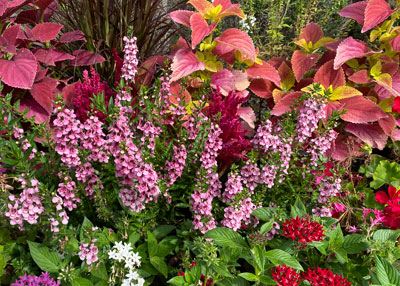
• Space your plants the recommended distance apart in the beds. Nothing ruins a good landscaping show faster than having plants set way too far apart in their beds. Nothing ruins plants faster than having them crammed too closely together. Know their mature sizes and plant them accordingly.
• Water the plants thoroughly immediately after you set them out. It’s usually best to do this with a water breaker on the end of your hose. If you don’t water them by hand, the planting soil in the bed will wick water right out of their rootballs. It’s really best to water them by hand every couple of days for their first two or three weeks in your garden. Eventually you’ll be able to turn the task over to your sprinkler system or hose-end sprinkler.
• A day or two after planting fertilize your plants with a high-nitrogen, water-soluble fertilizer. This can be applied with a fertilizer injector that will pull a strong solution into the hose, diluting it to the proper mix in the process. Repeat weekly until the plants are growing actively, at which point you can switch over to granular fertilizer.
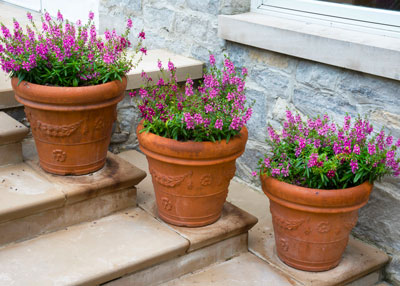
• Not all of your “beds” have to be in the actual ground. Container gardens are great. Choose large pots, and double check that they have drainage holes. Use a lightweight, highly organic potting soil, and fertilize the plants each time that you water them. Professionals suggest you use a “thriller,” a “spiller” and a “filler” as you plant the containers. Respectively, those would be tall plants with drama, trailing plants that will cascade over the edges of the pots, and plants that have a lightweight and airy feeling to grow in between.
